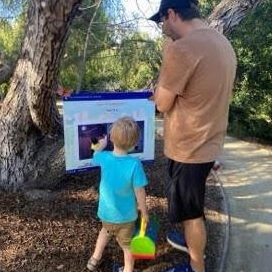Imagine sweltering through four days of 40°C – 50°C temperatures. Or not being able to get home because flooding has disrupted rail and road networks. With the changing global climate, such scenarios are possible within the next 20 years. The question is: will Victoria be resilient to these challenges? This is the problem senior government officials and researchers gathered together to answer. RSV’s inaugural Future Thinking Forum saw representatives from over 35 agencies, including universities and government, meet to discuss Victoria’s capacity to cope with extreme weather. The proceedings began with the description of two possible extreme weather scenarios: a severe heatwave and an extreme flooding and wind event. These scenarios were not one of a distant future, nor were they from a dystopian, Eco-Disaster novel. They could be Victoria’s reality within the next two decades.
People often say that we are not born racist, however the truth is actually more complicated: new-born infants exhibit no preference for faces of various ethnic groups, however from the age of 3 months, infants begin to take longer to scan faces – indicating that they are thinking more about appearances – and exhibit a preference for faces of their parents’ (and own) ethnic group(s). These findings imply that while we may not be born racist, our perceptions of ethnic differences are learned during early development as a result of exposure to own- versus other-race faces. In this reflective piece, Catriona Nguyen-Robertson considers the neuroscience of racism as presented to the Society by Dr Larry Sherman, drawing parallels to her own experience as an Australian with a mixed heritage of Vietnamese and Scottish parentage.
This year, the assessors of the Royal Society of Victoria’s Phillip Law Postdoctoral Award in the Physical Sciences worked diligently through the pile of applicants that grows, year on year, with the growth in Victoria’s remarkable pool of talent. It is an intensely competitive field of Early Career Researchers and, this year, our assessors simply could not find a way to separate the two lead applicants.
“Both have made – and continue to make – significant contributions to modern physics with different, substantial potential for application,” explained Dr Peter Baines, the Secretary of the Royal Society of Victoria and one of the assessors. Ultimately, the two lead applicants were ruled a dead heat.
The Society congratulates Dr Sumeet Walia and Dr Nishar Hameed on their joint win of the 2018 Phillip Law Postdoctoral Award for the Physical Sciences!
There were once Eucalypts in South America and New Zealand, and South American conifers in Australia. What’s the link?
Antarctica.
Once at the heart of the Gondwana supercontinent, it is unsurprising that Antarctica holds information on plant species that were once common throughout the Southern Hemisphere. First travelling to Antarctica in the summer of 1991-92, Professor Cantrill has since returned eight times to collect data, sometimes spending up to five months at a time out in the field away from shelter and wildlife. Today, the growth and variety of flora in Antarctica is limited, due to the sheer amount of ice cover and inhospitable conditions; however, Professor Cantrill has dug deeper into the past to uncover the southernmost continent’s fossil record, revealing a flourishing environment millions of years ago that supported diverse plant life.
Four categories of science, eight amazing presentations! What a wonderful night we had at the Society, with these outstanding early-career scientists presenting their remarkable work with passion, humour and poignancy. Drawn from a very competitive applicant pool of 47 final year PhDs from across Victorian research institutions, these newest members of the Royal Society of Victoria were already assured of a prize on the night – it was just a matter of which one.
Ultimately, our competition must acknowledge those who draw ahead of the pack on the grounds of effective communication, robust science, the capacity to answer questions through audience discussion and the significance of their research. The results are listed here in each category, with warm congratulations to all our winners and runners-up.






